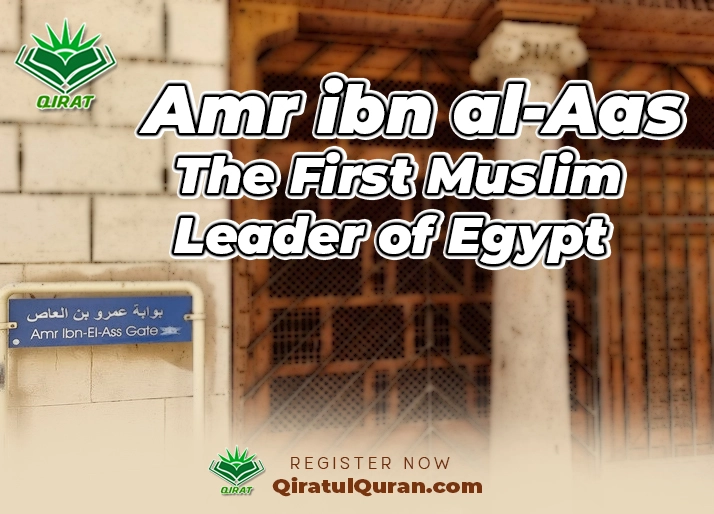Takbeerat (also spelled takbirat or takbeeraat) comes from the Arabic word “takbeer” (تَكْبِير) which means to say “Allahu Akbar” (الله أكبر), meaning “Allah is the Greatest”. Takbeerat thus refers to saying Allahu Akbar repeatedly in worship such as during the daily prayers or special prayers for Eid.

Takbeerat of Eid in Arabic Written Form
اللَّهُ أَكْبَرُ اللَّهُ أَكْبَرُ اللَّهُ أَكْبَرُ لَا إلَهَ إلَّا اللَّهُ. اَللَّهُ أَكْبَرُ اللَّهُ أَكْبَرُ وَلِلَّهِ الْحَمْدُ
What is Takbeer in namaz?
Takbeer is integral to the Muslim daily prayers (namaz/salah). It is recited at several points during the prayer, most notably:
Takbeerat Al-Ihram
This is the opening Takbeer that marks the start of the prayer. It is known as Takbeerat Al-Ihram (تَكْبِيرَة الإِحْرَام). After making the intention to pray, the worshipper raises their hands to their ears and says “Allahu Akbar” before starting the recitation of Surah Al-Fatiha.
Between Rak’ahs
After completing one unit (rak’ah) of prayer and rising up from the bowing position, worshippers say “Sami Allahu liman hamidah, Rabbana lakal hamd” followed by “Allahu Akbar” before going down for prostration. The same is done when rising up to start the next rak’ah.
During Ruku and Sujud
Some Muslims also recite Takbeer when going down for Ruku (the bowing position) and when going down for sujud (prostration). Additional Takbeers may also be recited in each position.
So in summary, Takbeer is used to magnify Allah at various points within the Muslim prayer.
What is the Takbeer for Eid Al Fitr & Eid ul Adha?
The Takbeer for Eid ul Fitr & Eid al-Adha has some additional words to the basic Allahu Akbar. The full Eid Takbeer is:
الله أكبر الله أكبر ، الله أكبر لا إله إلا الله Allahu Akbar Allahu Akbar, Allahu Akbar La ilaha illallah
So it is recited as “Allahu Akbar, Allahu Akbar, Allahu Akbar, There is no god except Allah”.
Note: The Complete Takbeer of Eid Prayers we have mentioned at the start of the Article kindly Check it out From there.
This is recited during the special Eid prayers as well as in the days leading up to Eid al-Adha. In fact, the Takbeer is recited intensely from the morning of Arafah during Hajj until the last day of Mina, which is the 3rd day of Eid al Adha. Many Muslims will recite this Takbeer loudly and frequently during this period.
How do you say Takbeer in Eid prayer?
Here are the main points where Takbeer is recited in Eid prayer:
1. Takbeerat al-ihram
To begin the Eid prayer, the imam says the opening Takbeer (Allahu Akbar) while raising the hands. The congregation follows by saying Allahu Akbar while also raising their hands. This Takbeer marks the beginning of the prayer.
2. After each rak’ah
In Eid prayer, after the imam has finished reciting Surah Al-Fatiha and a Surah in the first rak’ah, he will rise and say “Allahu Akbar” and then go into Ruku. The congregation follows. The same is done during the second rak’ah.
3. Before the Qa’dah (sitting position)
In the second rak’ah, after reciting the surahs, the Imam will say the Takbeer (Allahu Akbar) 7 more times. The congregation follows the Imam also saying Allahu Akbar after each of his Takbeers.
4. During the khutbah
The Eid khutbah and dua are done after the Eid prayer while sitting. It is sunnah to recite some Takbeers quietly during the khutbah as a way to exalt Allah.
So in summary, the Eid prayer has Takbeer said at least 12 times by the congregation along with the imam. Much of the prayer is accompanied by the enthusiastic chanting of Allahu Akbar which makes it a truly special celebration of God’s greatness.
What is Takbeerat Al Ihram?
Takbeerat Al-Ihram refers specifically to the opening Takbeer recited at the start of regular ritual prayers (salah) as well as the Eid prayer.
To begin the prayer, you first make the intention (niyyah) in your heart for whichever prayer you want to pray. Then you raise your hands up near to your ears and say “Allahu Akbar”. This is called the Takbeerat Al-Ihram or the Takbeer of starting the prayer.
After this Takbeer, you can start reciting Surah Al-Fatiha. The Takbeerat Al-Ihram thus marks the formal start of ritual prayer.
Some key rules regarding Takbeerat Al-Ihram:
- It must be recited out loud for obligatory (fard) prayers. In nafl (optional) prayers it may be recited quietly.
- The hands should be raised to the level of the earlobes or shoulders before or as you say the Takbeer.
- You cannot say any words before the Takbeer e.g. Bismillah.
So in summary, Takbeerat Al-Ihram is the opening Takbeer with raised hands that starts off the normal Muslim prayer or Eid prayer.
When to read Takbeer?
Some of the main instances that Takbeer (saying Allahu Akbar) is prescribed include:
1. During obligatory and voluntary prayers
Takbeer is recited several times during every rak’ah e.g. when going into Ruku, sujud, when rising up from them, and when starting new rak’ahs.
2. During the Eid prayer
Many Takbeers are said, at least 12 in the minimum obligatory prayer.
3. In the days preceding Eid al-Adha
It is prescribed to recite the Takbeer loudly and frequently after Fajr, Maghrib, and Isha prayers starting from the 9th Dhul Hijjah up until Asr time on the 13th Dhul Hijjah.
4. During Hajj rituals
The Takbeer is recited intensely on the Day of Arafah, whilst stoning the jamarat pillars during the ayas of tashreeq (11th-13th dhul Hijjah), and whilst sacrificing an animal on Eid al-Adha.
5. During times of victory
It is Sunnah to say Allahu Akbar out loud when something good or victorious happens to glorify Allah in times of success.
6. Voluntary Takbeer anytime
You can read voluntary Takbeer at any time by glorifying Allah through His remembrance.
So Muslims are encouraged to exalt Allah through Takbeer at prescribed times as well as voluntarily whenever they wish to glorify Him. It brings great spiritual rewards.
How to perform Takbiratul Ihram?
Takbiratul Ihram refers to the opening Takbeer that starts the ritual prayer. Here is how to perform it:
- Make the intention (niyyah) in your heart for the prayer you wish to pray e.g. “I intend to pray Fajr/Zuhr/Asr (obligatory) two rak’ahs for the pleasure of Allah”.
- Raise both your hands to your earlobes in a way that your palms face your ears and your fingertips almost touch your head. Your elbows should not be resting on your sides in this position.
- Whilst still raising your hands, say “Allahu Akbar” (الله أكبر) out loud (for fard prayers). Feel the greatness of Allah in your heart whilst saying it.
- Put your right hand over your left on your chest. Look down to the place of Sajdah.
- You can now start reciting Surah Al-Fatiha and then continue with your prayer as normal.
The key aspects of Takbiratul Ihram:
- Raised hands to the level of your shoulders or earlobes
- Saying Allahu Akbar out loud
- Having the proper intention
- Saying it at the start of every obligatory or voluntary prayer
How many Takbirs are there in Eid prayer?
The total number of times Takbeer (saying Allahu Akbar) is said in Eid prayer is at least 12 times. This is for the minimum 2 rak’ah Eid prayer.
Breakdown:
- Opening Takbeerat al-ihram: Once (1)
- After the opening surahs in the first rak’ah: Twice (2)
- After the opening surahs in the second rak’ah: Twice (2)
- Before going into Qa’dah: Seven times (7)
So 1 + 2 + 2 + 7 = 12 times total in the obligatory Eid prayer.
However, it is sunnah to also say additional Takbeers during the khutbah making the total number higher than just 12.
The Eid prayer is thus a true celebration of God’s greatness, majesty, and glory due to the many instances we repeat Allahu Akbar during it. Takbeer transforms this holiday prayer into a memorable festival for all Muslims around the world.
Is Takbeer 6 or 12 for Eid?
There is some confusion regarding whether you say Takbeer 6 times or 12 times in Eid prayer. But what is clear and confirmed is that according to the Sunnah, you must say the words Allahu Akbar (Takbeer) at least 12 times total during the standard 2 rak’ah Eid prayer.
This is the consensus of the vast majority of Islamic scholars (ulama) comprising the four Sunni schools of jurisprudence. The 12 Takbeers are said at specific points, as outlined before:
1 during Takbeer al-ihram 2 during the two rak’ahs And 7 before qa’dah Totaling 12 Takbeers in Eid prayer.
Confusion sometimes arises because after starting the Eid prayer and completing Surah Al-Fatiha in the first rak’ah, some people incorrectly Sit down after just 5 or 6 Takbeers thinking the rak’ah is finished. But this is incomplete and must be completed with a total of 12 Takbeers for the Eid prayer to be valid.
So the correct number is 12 minimum per person, not 6. The proofs for this are established from authentic ahadith regarding how the Prophet Muhammad PBUH performed Eid prayer during his time. Following his Sunnah incompletes the Eid celebration.
What is the dua for Eid?
There are several supplications from the sunnah that can be recited on Eid day. Some of the most well-known and popular Eid dua’s include:
- After the Taslim at the end of the Eid prayer, you can say:
أَسْتَغْفِرُ اللهَ ، أَسْتَغْفِرُ اللهَ ، أَسْتَغْـفِرُ اللهَ ، اللّهُـمَّ أنْـتَ السَّلامُ ، وَمِـنْكَ السَّلام ، تَبارَكْتَ يا ذا الجَـلالِ وَالإكْـرام
I ask Allah for forgiveness, I ask Allah for forgiveness, I ask Allah for forgiveness, O Allah you are as-Salam and from you comes all peace, blessed are you, O possessor of majesty and honor.
- Recite durud sharif and salawat upon the Prophet Muhammad (Allahumma Salli Ala Muhammad…)
- Say takbeer 100 times: Allahu Akbar, Allahu Akbar, Allahu Akbar
- Give some charity on Eid day (Sadaqat ul Fitr or regular charity)
These are just a selection of some of authentic ad’iyah and dhikr that can be recited on the blessed day of Eid-ul-Fitr or Eid-ul-Adha after the main Eid prayer.
Are there 2 types of Eid?
Yes, in Islam we have 2 main types of ‘Eid’ or Islamic holidays that are celebrated:
1. Eid al-Fitr
This is known as the ‘lesser Eid’ or ‘small Eid’ in Arabic. It marks the end of Ramadan, the month of fasting for Muslims. Eid al-Fitr is thus a huge celebration that follows a month of tremendous worship.
2. Eid al-Adha
This is known as the ‘greater Eid’ because it remembers the great sacrifice that Prophet Ibrahim AS made out of obedience to Allah. Eid al-Adha coincides with the annual Hajj pilgrimage. It takes place on the 10th of Dhul Hijjah, the final month of the Islamic lunar calendar.
In summary:
- Both Eids are special days of celebration for Muslims worldwide
- Each has their own Sunnah practices and Islamic rulings
- Eid al-Fitr marks the end of Ramadan; Eid al-Adha remembers Prophet Ibrahim’s sacrifice
These two Eids are a gift for the Muslim Ummah, allowing us to come together in solidarity, give thanks to Allah, uphold the symbols of Islam, and strengthen our faith. They are meant to be joyous, spiritual occasions for worship and good deeds.
Conclusion
From the above detail, we can appreciate the deep significance and meaning behind Takbeerat and the multiple scenarios it is practiced in Islam. Saying Allahu Akbar is a core part of Muslim ritual worship – from the birth of a baby and marriage gatherings to the daily prayers and biggest Islamic holidays.
Takbeer serves to glorify Allah, humble us as His servants, internalize His greatness, and decorate certain acts of worship. Its inherent meanings remind us constantly of the divine.
When we celebrate by saying it at the Eid prayer, for example, we fuse religious rituals with spiritual joy at Allah’s infinite glory. In essence, then, Takbeerat is the incarnation of pure God consciousness on the tongue of every Muslim.





